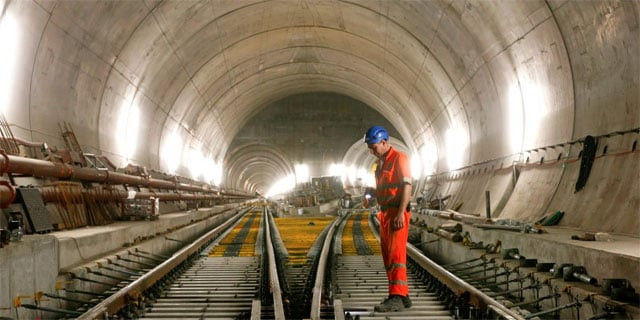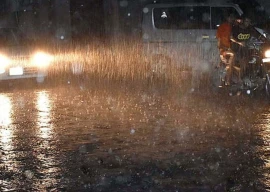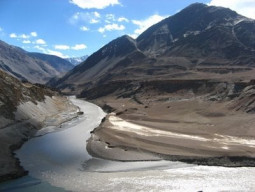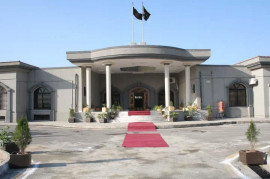
The 35-mile long tunnel made with 2 million truck loads of earth and at a cost of £6.5 billion, will transport passengers within two hours and 50 minutes from Zurich to Milan, reducing almost an hour off the current travel time, authorities claimed.
Authorities further said that the NEAT Gotthard Base Tunnel is set to open to the public in June 2016, however, will select 1,000 people to take the maiden voyage in January 2016.
 PHOTO: REUTERS
PHOTO: REUTERSThe work on the project began 20 years ago in 1996 with over 2,000 workers hired to excavate more than two million truck loads of earth. Further, the tunnel measures 35 miles and exceeds Japan's 14.5 mile long Seikan Tunnel, connecting two islands.
 PHOTO: REUTERS
PHOTO: REUTERSDue to the rugged terrain of the alps, massive tunnel boring machines cutting through almost 100 feet of rock on a daily basis were required, consequently eight workers lost their lives in this dangerous process.
Read: Stay online on the Green Line from Karachi to Islamabad
According to a Swiss newspaper, safety tests will begin in October. "All scenarios will be considered and tested," Marco Hirzel of Alptransit Gotthard said during a press conference.
 PHOTO: REUTERS
PHOTO: REUTERSRegardless of the rugged terrain, workers were able to make a completely flat tunnel, enabling trains to travel at more than 150 miles per hour.
 PHOTO: REUTERS
PHOTO: REUTERS"After opening the tunnel, it will be the safest stretch of the Swiss railway network," Renzo Simoni, CEO of AlpTransit Gotthard said.
This article originally appeared on Mail Online


















COMMENTS
Comments are moderated and generally will be posted if they are on-topic and not abusive.
For more information, please see our Comments FAQ